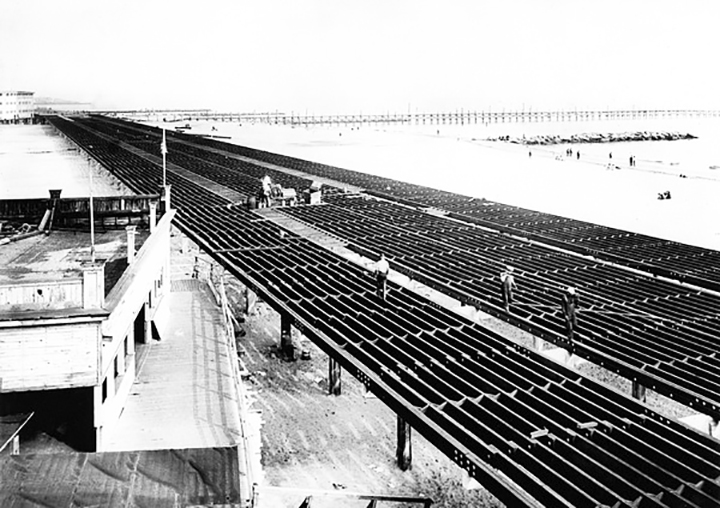The proposition to establish an ocean boardwalk at Coney Island apparently does not meet with universal approval among the business men and property owners at the resort. The Aldermanic Committee on Parks held a public hearing on the plan today. There was a large delegation present in favor of it, and a delegation of equal strength against it, some of whose members denounced the proposed improvement as a “land grab.”
Especially bitter in their opposition were delegates from the West End Improvement League. They insisted that the boardwalk would be detrimental to the property interests at Sea Gate and at the west end of the island. They are against the construction of the boardwalk by private capital. They want the improvement constructed at the expense of the city, but on the beachfront itself. They are against the present plan to build it 300 feet out into the ocean.
The speakers of the league were John G. Hart, William J. Hunter, William C. Canning and James MacDonald. The Greater Coney Island Boardwalk Company, the corporation formed to build the boardwalk by private capital, were represented by George C. Tilyou of Steeplechase Park; Mr. Voorhees, an engineer; and Mr. Miller, the secretary of the company.

The company, Mr. Tilyou said, was prepared to begin construction work immediately. He said that it had the consent of all the property owners along the beachfront, which would enable them to build a boardwalk as far as the Oriental Hotel, Manhattan Beach. This would make a walk five miles long. The Coney Island section itself is about a mile and a half in length.
Mr. Hart, who said he was a property owner, living at Ocean Parkway and Avenue N, outlined the arguments for the opposition to the ocean walk. He said that the men whom he represented were in favor of having the city, rather than a private corporation, build the boardwalk. He stated that the new corporation would never be able to extend its walk as far as West Thirty-seventh street, as proposed, on account of the property of the Brooklyn Children’s Aid Society, the New York Children’s Aid Society, the Roman Catholic Orphan Society, and the Sea Breeze Home, all of which were opposed to the boardwalk idea. This would mean that the property at the west end of Coney Island would suffer greatly in value, he declared.
Mr. Hart bitterly denounced the men behind the new proposition. He declared that they were now using the plans prepared at great expense by the borough engineers, when Desmond Dunne was commissioner of public works. Mr. Dunne is one of the seven men who formed the corporation to build the ocean boardwalk.
The statements of Mr. Hart were denied by the representatives of the new company, who declared that the proposed boardwalk would be of great advantage to all the property at Coney Island. Mr. Miller said that no attempt would be made by the owners of the boardwalk to keep the general public off of it, and that the city would be perfectly free to build as many highways, giving access to the walk, as it pleased.
Mr. Tilyou said that no seaside park was “decent” until a boardwalk had been built. He stated that a great percentage of the property owners wished the boardwalk built as planned. It was announced at the conclusion of the hearing that the matter would be taken under advisement by the committee, and that a decision would be made at a later date.
***
(Special thanks to Brooklyn Public Library)

 Bari Pork Store officially closes, State Sen. Chan holds thank you ceremony
Bari Pork Store officially closes, State Sen. Chan holds thank you ceremony  Fort Hamilton heralds its 200th anniversary
Fort Hamilton heralds its 200th anniversary